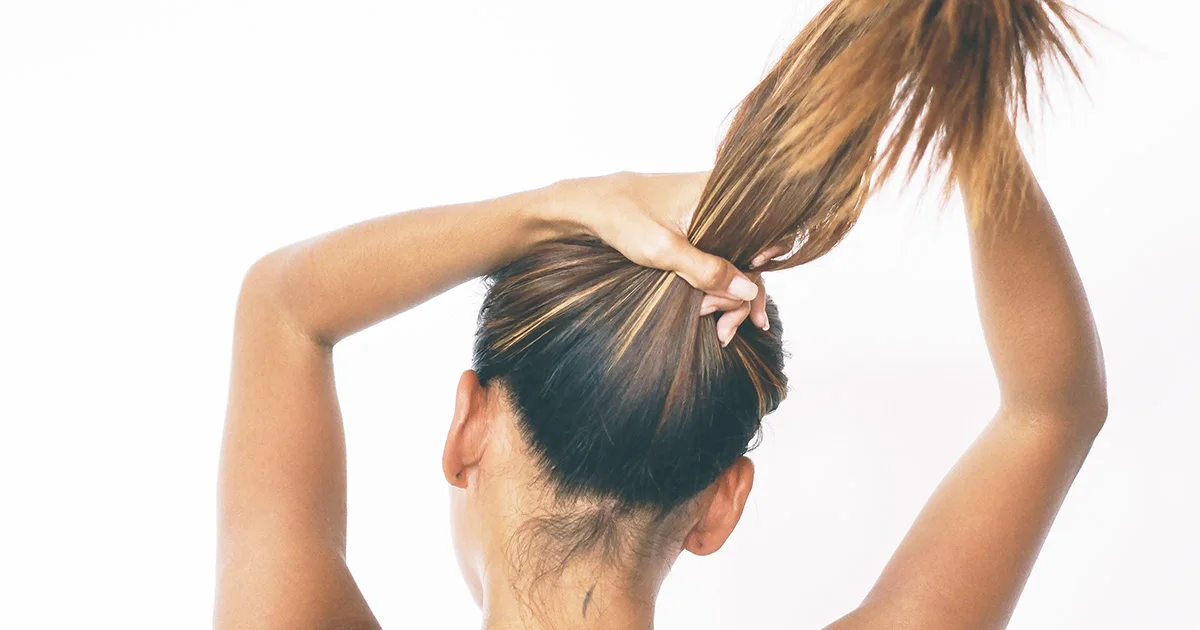Here's what we'll cover
Here's what we'll cover
Hair loss can have many reasons: genetics, aging, hormones, and even stress. No matter the cause, hair loss can be distressing for many people. The good news is, there are more treatment options for it than ever before.
One of the most common hair loss treatments for genetic hair loss in men is a medication called finasteride that comes in oral and more recently, topical forms. Finasteride (brand names Propecia and Proscar) falls into a drug class known as 5-alpha-reductase inhibitors. While both are forms of finasteride, the brand name products differ in their indications and dosage. Proscar is a higher dose of finasteride (5 mg) approved for benign prostatic hyperplasia (BPH), or an enlarged prostate.
On the other hand, Propecia or its generic form is prescribed at a lower dose (1 mg) to treat male pattern baldness, or androgenic alopecia. This form of alopecia is permanent hair loss that typically occurs on the front and top of the scalp. Scientific research has shown finasteride to effectively slow hair loss in men and even stimulate hair regrowth. In a series of studies, 83% of men balding at the crown of the head had further hair loss prevented, and 70% of men with hairline recession had further hair loss prevented.
Finasteride works by preventing testosterone from converting to another hormone called dihydrotestosterone (DHT). Since DHT is known to shrink hair follicles and cause hair to fall out faster, blocking it can help delay hair loss and encourage regrowth.
The FDA approved oral finasteride for hair loss back in 1997. Along with topical minoxidil (more on that later), finasteride is considered one of the gold standards for hair loss treatment for men. Early research has found topical finasteride to be effective for hair loss, but so far, topical is an off-label use.
Can you get finasteride over the counter?
If you’ve searched your local pharmacy for finasteride and can’t find it on the shelves, there’s a reason. Unlike other hair products like topical minoxidil, you cannot get finasteride (oral or topical) over the counter.
That means you can’t simply order it online or purchase it from a store without a valid prescription from a healthcare professional. Because it’s an oral medication designed for long-term use – plus its risk for side effects – a prescription is needed for finasteride.
While it’s considered safe and effective for most men, finasteride may cause side effects, including:
Decreased sex drive
Mood swings or depression
Less common adverse reactions include skin rashes and breast tenderness, and there may also be an increased risk of prostate cancer. These and other side effects have been reported in those taking the 5 mg dose rather than the 1 mg dose.

How to get finasteride
Even though finasteride isn’t available over the counter, getting the medication is straightforward. And with remote options like telehealth, you can get a finasteride prescription from the comfort of your own home, after a healthcare provider determines the drug is appropriate for you.
The first step is visiting a healthcare provider in-person or remotely through telehealth. Your provider will ask about your symptoms (thinning hair or a receding hairline are indicators of male pattern baldness) and examine, or ask for photos of your scalp. Another option is seeing a specialized healthcare professional like a dermatologist, who can assess your head and scalp to determine what kind of hair loss you may be experiencing. Dermatologists can also write you a prescription for finasteride.
Once you have a prescription, all you need to do is fill it at your local pharmacy and pick it up. If you aren’t mobile or live in a remote area, many pharmacies also offer discreet delivery services. Telehealth providers like Ro also offer hair loss products, including finasteride in both topical and oral forms, and ship them right to your home after a healthcare provider has evaluated you. You can do all of that from your mobile device.
While finasteride for conditions like BPH may be covered by insurance, coverage of finasteride for hair loss is unlikely. One way to cut costs is to go for generic finasteride, which may be cheaper than the brand name version Propecia.
Over-the-counter options for hair loss
If you don’t want to go through the hassle of talking with a provider to get a prescription (even though it isn’t a hassle if you go through telehealth), finasteride isn’t your only hair loss treatment option. Here are some other products available online or at your local pharmacy for male pattern baldness and other types of hair loss.
Minoxidil
Probably the most well-known and recommended treatment for hair loss is minoxidil (brand name Rogaine). Minoxidil was originally intended to be a blood pressure medication, but when researchers observed an unexpected side effect – excessive hair growth – it was developed into a hair loss formula.
Minoxidil was approved for male pattern baldness in 1988, and a few years later received the FDA’s green light for treating hair loss in women as well. It’s available over the counter in several topical formulations that are safe and easy to use, including:
Minoxidil liquid: Applied with a dropper, topical minoxidil solution is available at a 2% (for women) and 5% (for men) dose. Minoxidil liquid is just as effective as the foam, but may cause hair to look or feel greasy.
Minoxidil foam: This product is applied to the scalp and massaged into the skin daily.
Keep in mind that for any minoxidil product, only the 2% strength is approved for women. An oral version of minoxidil is on the market, though only via prescription, and its use for hair loss is off-label.
Combining the two hair loss treatments may be even more effective than minoxidil or finasteride alone. In people with androgenic alopecia, science has found combination therapy to be more effective than either medication alone, although more research is needed. A 2-in-1 topical finasteride and minoxidil spray is also available, but only with a prescription.
Shampoos and conditioners
While not FDA-approved or rigorously backed by science for hair loss, there are a plethora of thickening shampoos and conditioners out there to help give hair extra volume and mask the appearance of thinning hair. Here are a few options:
Volumizing shampoo: The natural oils your hair produces can sometimes weigh it down making locks look flat or thin. Search for a dermatologist-approved product, designed to fluff hair up and enhance volume. Keep in mind that just because a product is advertised as thickening or volumizing doesn’t mean it will reduce thinning or help hair regrowth.
Biotin-based shampoos: Biotin is a type of B vitamin that’s responsible for keeping your hair, skin, and nails healthy. While science is scant on biotin for hair loss, biotin shampoos and conditioners may help improve the overall appearance of your hair. Ensuring you get enough biotin through your diet (foods like oily fish, avocados, almonds, and egg yolks are all great sources of biotin) is another natural way to boost your overall health – which includes promoting healthy hair.
Saw palmetto products: A type of small palm tree, saw palmetto is said to have medicinal purposes that include alleviating symptoms of BPH and potentially hair loss. Again, science is limited, but looking for shampoos containing the natural product could improve the overall look and feel of your hair.
Vitamins and supplements
It’s well known that vitamins and minerals play an important role in hair follicle development. It’s possible that deficiencies in certain vitamins – like folate, biotin, and vitamin B12 – could be linked to hair loss. While you don’t necessarily want or need to take supplements if you don’t have a diagnosed deficiency, incorporating dietary supplements into your daily routine is another option for boosting hair health.
If you’re experiencing hair loss, it’s important to speak with a healthcare provider who can help customize a hair treatment plan specific to your needs. Everyone experiences hair loss in different ways, and what may work for one person may not be as effective for another. Whether it’s oral finasteride, minoxidil, or a combination of both, hair loss is treatable if you take action early and are consistent with your treatment regimen.
DISCLAIMER
If you have any medical questions or concerns, please talk to your healthcare provider. The articles on Health Guide are underpinned by peer-reviewed research and information drawn from medical societies and governmental agencies. However, they are not a substitute for professional medical advice, diagnosis, or treatment.
Chen, L., Zhang, J., Wang, L., et al. (2020). The Efficacy and Safety of Finasteride Combined with Topical Minoxidil for Androgenetic Alopecia: A Systematic Review and Meta-analysis. Aesthetic Plastic Surgery, 44, 962–970. doi: 10.1007/s00266-020-01621-5. Retrieved from https://cdn.mednet.co.il/2012/05/the-efficacy-and-safety-of-finasterideminoxidil.pdf
Gupta, A. & Foley, K. A. (2014). 5% Minoxidil: treatment for female pattern hair loss. Skin Therapy Letter, 19(6), 5-7. Retrieved from https://pubmed.ncbi.nlm.nih.gov/25807073/
Gupta, A. K., Talukder, M., Venkataraman, M., & Bamimore, M. A. (2022). Minoxidil: a comprehensive review. Journal of Dermatological Treatment, 33(4), 1896-1906. doi: 10.1080/09546634.2021.1945527. Retrieved from https://pubmed.ncbi.nlm.nih.gov/34159872/
National Center for Complementary and Integrative Health. (2020). Saw Palmetto. Retrieved from https://www.nccih.nih.gov/health/saw-palmetto#:~:text=Currently%2C%20saw%20palmetto%20is%20promoted,hair%20loss%2C%20and%20other%20conditions
Shapiro, J. & Kaufman, K. D. (2003). Use of finasteride in the treatment of men with androgenetic alopecia (male pattern hair loss). The Journal of Investigative Dermatology. Symposium Proceedings, 8(1), 20–23. doi: 10.1046/j.1523-1747.2003.12167.x. Retrieved from https://www.sciencedirect.com/science/article/pii/S0022202X15529357
Singh, S., Patil, A., Kianfar, N., et al. (2022). Does topical minoxidil at concentrations higher than 5% provide additional clinical benefit? Clinical and Experimental Dermatology, 47(11), 1951–1955. doi: 10.1111/ced.15338. Retrieved from https://academic.oup.com/ced/article/47/11/1951/6966079
Suchonwanit, P., Thammarucha, S., & Leerunyakul, K.. (2019). Minoxidil and its use in hair disorders: a review. Drug Design, Development and Therapy, 13, 2777–2786. doi: 10.2147/DDDT.S214907. Retrieved from https://www.ncbi.nlm.nih.gov/pmc/articles/PMC6691938/#:~:text=To%20date%2C%20topical%20minoxidil%20is,for%20other%20hair%20loss%20conditions
Rosner, W. (2014). Proscar and Propecia–A Therapeutic Perspective. The Journal of Clinical Endocrinology & Metabolism, 89(7), 3096–3098. doi: 10.1210/jc.2004-0156. Retrieved from https://academic.oup.com/jcem/article/89/7/3096/2844045
U.S. Food and Drug Administration. (2012). Propecia. Retrieved from https://www.accessdata.fda.gov/drugsatfda_docs/label/2012/020788s020s021s023lbl.pdf
Zito, P. M., Bistas, K. G., & Syed, K. (2020). Finasteride. StatPearls. Retrieved from https://www.ncbi.nlm.nih.gov/books/NBK513329/









